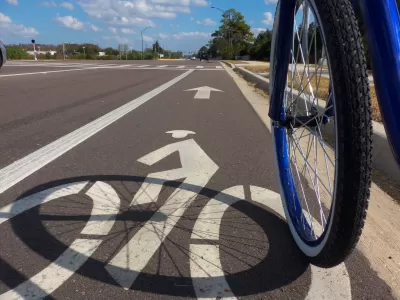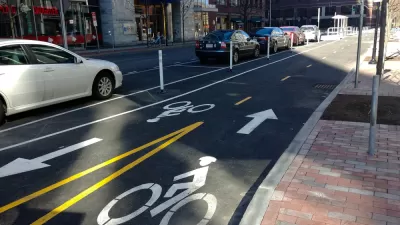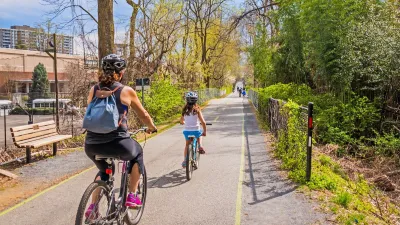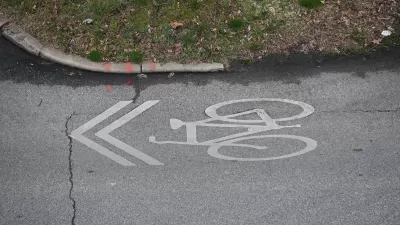Arterial roads and poorly designed intersections pose significant threats to cyclist and pedestrian safety.

In a collaboration with BikeMaps.org dubbed the #2020CyclingDeaths project, Maura Fox and Luke Whelan assess cycling deaths on American roads in the past year to see where, how, and how many bicyclists are dying. "Record numbers of cyclists (and thousands of pedestrians) on our nation’s roads are being killed by drivers often without any media attention beyond a brief local news story," the authors write.
Their study captured 697 deaths between January 2020 and January 2021. "Since we were only able to count deaths reported by local media, the actual total is likely significantly higher." BikeMaps.org, a project started by Trisalyn Nelson, crowdsources information about cyclist crashes, near misses, traffic hazards, and bike thefts in the United States and Canada.
Key takeaways from the study show that more than a quarter of crashes are hit-and-runs, and cycling deaths occur all over (project data came from 47 states), with the highest numbers of deaths occurring in California and Florida, followed by New York and Texas. Surprisingly, rural, suburban, and urban areas have similar rates of cycling deaths. Despite lower density and less traffic, rural roads aren't designed to protect people on bikes. According to the data, the most dangerous place for cyclists is an arterial road, "a busy, multilane thoroughfare with traffic signals at intersections and speeds limits exceeding 30 miles per hour," which account for 65% of fatal crashes.
The authors suggest some solutions for planners and policymakers, including incorporating a car’s potential risk to cyclists and pedestrians with vehicle-safety ratings, improving education for drivers, and incentivizing cycling to induce more ridership.
FULL STORY: What We Learned from Tracking Cycling Deaths for a Year

Manufactured Crisis: Losing the Nation’s Largest Source of Unsubsidized Affordable Housing
Manufactured housing communities have long been an affordable housing option for millions of people living in the U.S., but that affordability is disappearing rapidly. How did we get here?

Americans May Be Stuck — But Why?
Americans are moving a lot less than they once did, and that is a problem. While Yoni Applebaum, in his highly-publicized article Stuck, gets the reasons badly wrong, it's still important to ask: why are we moving so much less than before?

Using Old Oil and Gas Wells for Green Energy Storage
Penn State researchers have found that repurposing abandoned oil and gas wells for geothermal-assisted compressed-air energy storage can boost efficiency, reduce environmental risks, and support clean energy and job transitions.

Updating LA’s Tree Rules Could Bring More Shade to Underserved Neighborhoods
A new USC study finds that relaxing Los Angeles’ outdated tree planting guidelines could significantly expand urban tree canopy and reduce shade disparities in lower-income neighborhoods, though infrastructure investments are also needed.

California's Canal Solar Projects Aim to Conserve Resources and Expand Clean Energy
California’s Project Nexus has begun generating electricity from solar panels installed over irrigation canals, with researchers and state agencies exploring statewide expansion to conserve water and boost clean energy production.

HHS Staff Cuts Gut Energy Assistance Program
The full staff of a federal program that distributes heating and cooling assistance for low-income families was laid off, jeopardizing the program’s operations.
Urban Design for Planners 1: Software Tools
This six-course series explores essential urban design concepts using open source software and equips planners with the tools they need to participate fully in the urban design process.
Planning for Universal Design
Learn the tools for implementing Universal Design in planning regulations.
Heyer Gruel & Associates PA
City of Moreno Valley
Institute for Housing and Urban Development Studies (IHS)
City of Grandview
Harvard GSD Executive Education
Salt Lake City
NYU Wagner Graduate School of Public Service
City of Cambridge, Maryland





























